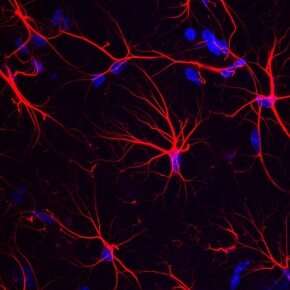
Scientists at the Laboratoire des Maladies Neurodégénératives (CNRS/CEA/Université Paris-Saclay) and the Neurocentre Magendie (INSERM/Université de Bordeaux) have just shown that a metabolic pathway plays a determining role in Alzheimer’s disease’s memory problems. This work, published on 3 March 2020 in Cell Metabolism, also shows that supplying a specific amino acid as a nutritional supplement in a mouse model of Alzheimer’s restores spatial memory affected early. This is a promising path for reducing memory loss related to that disease.
The brain uses a large part of the energy available to our body. To work properly, neurons and the surrounding cells, particularly astrocytes, must cooperate. The early phase of Alzheimer’s disease is characterized by a reduction in this energy metabolism, but until now we did not know whether this deficit contributed directly to the cognitive symptoms of Alzheimer’s disease.
A collaborative study has shown in a mouse model of Alzheimer’s disease that a decrease in the use of glucose by astrocytes reduces L-serine production. This amino acid is mainly produced by these brain cells and its biosynthesis path is altered in patients. L-serine is the precursor of D-serine, known to stimulate NMDA receptors, essential for brain function and to the establishment of memory. So by producing less L-serine, astrocytes cause reduced activity in these receptors, which alters neuronal plasticity and the associated memorization capacities. Scientists have also demonstrated that memorization functions in mice were restored by supplying nutritional L-serine.
Source: Read Full Article
